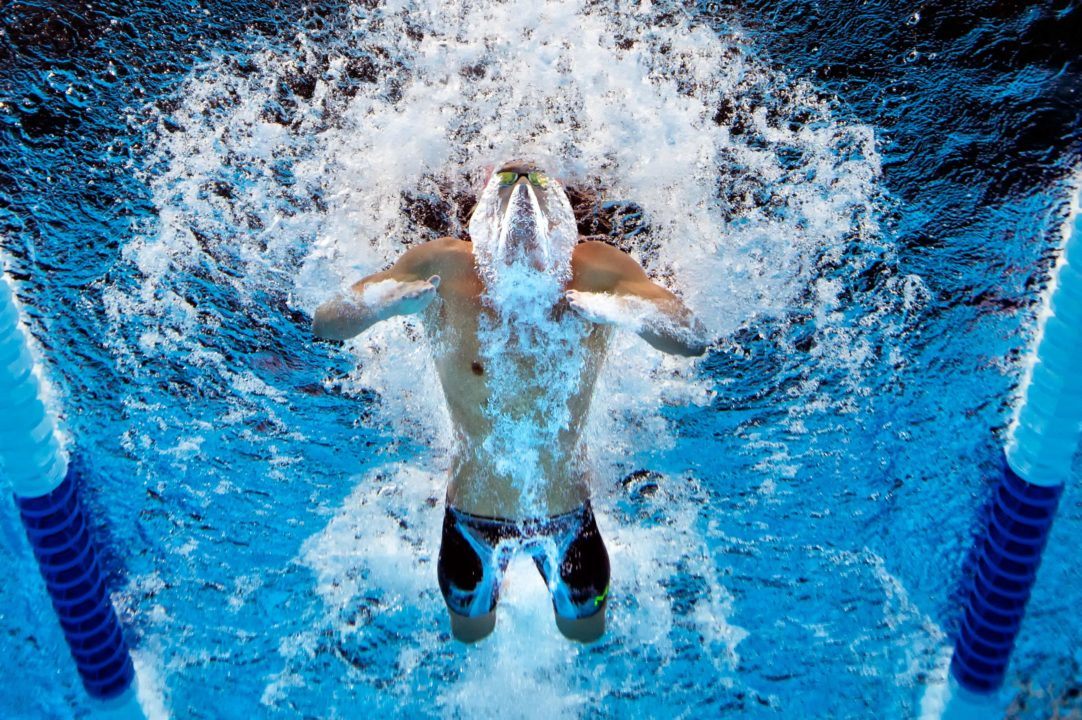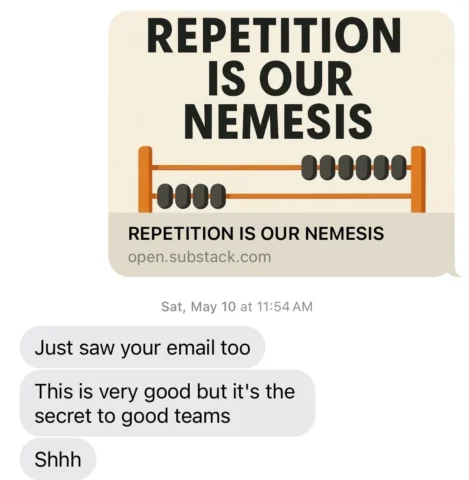Courtesy: Doug Cornish, the founder of Swimpler. Follow Swimpler on Substack here.
Every sport tells a story about what it takes to succeed. In swimming, those tales have long centered on early sacrifice, relentless repetition, and perpetual exhaustion.
But what happens when that story no longer resonates with the families we hope to serve?
Before coaches ever even have an opportunity to explain our methods, philosophy, or the benefits of your program, many parents have already tuned us out, repelled by the collective effect of the stories we’ve told for decades.
The Parent Perspective
Mrs. Miller is college-educated. She majored in economics, but her general-ed courses gave her just enough insight to care deeply about balance in her children’s development.
She knew a few swimmers growing up. Maybe they would’ve been friends, but swimmers never had time to hang out. Plus, they always seemed cranky. She didn’t quite understand when the swimmers tried to explain that it was just part of the sport.
Her understanding was shaped by her experiences. Swimmers had to be hyper-committed, constantly tired, and willing to make big sacrifices if they wanted to succeed.
Still, Mrs. Miller was captivated by Michael Phelps. Like the rest of us, she jumped around her living room watching his Olympic conquests and later caught a few of his interviews.
Michael Phelps didn’t miss a practice in six years.
Sounded extreme. Based on everything she knew about swimming, it tracked.
So you can understand her reluctance when her soon-to-be 9-year-old son came home, glowing after summer league, and asked about year-round swimming.
Now she’s walking up to your team tent at Summer League Champs.
A Common Conversation
Mrs. Miller:
“Hi Coach! My son, Johnny, is interested in year-round swimming. He’s going to be 9 years old. Could you give us some information? How long does the season last?”
Swim Coach:
“That’s great to hear! We have so much fun at Local Swim Club. The season begins late August and runs through March. We have tryouts next week.”
Even if Mrs Miller is still interested, the next question might be the deal-breaker.
Mrs. Miller:
“That seems like an awfully long commitment for a second-grader. How many practices per week would he need to attend?”
The Disconnect
The vast majority of rational parents aren’t looking for full-time sports commitments for their kids. They’re looking for multiple activities that introduce a range of skills, build confidence, and give kids choices when they’re ready for something more serious.
They have read, heard, and understand what the research is stating.
The American Academy of Pediatrics (2016)
“Youth should be encouraged to participate in multiple sports and delay specialization until late adolescence (age 15–16) to minimize risks of injury and burnout.”
International Olympic Committee (2015)
Early specialization increases risk for injury, psychological stress, and dropout. Encourages diversified training through age 12
Parents want balance and moderation as starting points. They do not want one activity to dominate their week or their year.
While the cost-benefit analysis and timing of specialization can be debated, especially when young children are setting lofty goals, the risks can not be overstated.
Once you’ve grown to love swimming and you begin aiming for greatness, you most certainly will need to develop discipline, grit, and perseverance. You will have to endure tough training cycles, making many sacrifices along the way.
Introduction to the sport, however, should not require these things.
As a sport, we’re letting this narrative become a major barrier to entry by making it exceedingly difficult for rational, thoughtful parents to even consider our sport for their children.
Chronic Glycogen Depletion
Excess repetition leads to poor technique mastery, musculoskeletal imbalance, and chronic glycogen depletion.
In Swimming Fastest, Ernest Maglischo brings our attention to two major studies and draws an important conclusion. Houston (1978) and Beltz et al. (1988) both demonstrated that 300–700 yards of high-intensity swimming can deplete glycogen. Maglischo adds that glycogen takes 24–48 hours to replenish “even when adequate supplies of fat, protein, and blood glucose are available.”
What does this mean for our sport?
It means that the vast majority of our swimmers perpetually exist in a state of chronic glycogen depletion.
Go to ChatGPT right now and ask the question:
What are the symptoms of chronic glycogen depletion?
Chronic glycogen depletion is more than a metabolic state.
It’s a metaphor for how swimming drains its athletes, stripping away pieces of them that over time no taper or small break between seasons can restore.
The Case for Change
We’ve accepted, often celebrated, the idea that swimming requires the ultimate sacrifice. That swimmers must give up time, relationships, other activities, musculoskeletal health, and mental well-being in pursuit of…
What, exactly?
What could possibly be worth all of that?
I didn’t pose that as a question for you to answer.
I posed it as the question that exists in the minds of nearly every rational parent who will never ask their child if they would like to try swimming.
Science, coaches, and teams are already pushing back against this narrative.
Dave Salo has made quite the career for himself, adorning many athletes with medals, by bucking the trends and basing his training on exercise science. His results have been so good that haters had to hush.
The new era of swimming thanks you for your work, Dave!
I recently texted my “Repetition Is Our Nemesis” article to a good friend who has developed Olympians and is one of the most well-respected coaches you know. Check the tape for their response:
So why aren’t we pushing back harder against antiquation?
As a society, we’re becoming more educated about the pitfalls of outdated training models.
Meanwhile, other youth sports are evolving, offering kids experiences that are physically safer, emotionally healthier, and more aligned with modern values.
Many swimmers are leaving the sport and choosing “nothing” over swimming.
Read that again!
In a recent survey, USA Swimming found that 33.5% of swimmers leaving the sport were doing so with no plans to go into another activity.
Echoing Anecdotes
To borrow a line from one of my earlier pieces: “Swimming breeds more imbalance, injury, and burnout than it does champions.”
If you are a swammer, you know this isn’t just rhetoric. You know many teammates and friends who quietly drifted away from the sport and now want nothing to do with it for their children.
Their stories aren’t isolated. The anecdotes of current and former swimmers collectively echo into a narrative that is repelling rational parents.
We should be challenging the norm and creating environments where athletes brag about how much fun they’re having. Where parents tell other parents how worthwhile the swim experience is.
But on a national scale, the opposite is happening. And we’re still holding up old-school swimming as the gold standard, to our own detriment.
We don’t need to abandon our pursuit of excellence.
In fact, the case is clear that improved technique development is the key to a faster, healthier, and more enjoyable sport.
If there exists a bright future for swimming in the modern United States, we can no longer accept, foster, or reinforce our current narrative.
Closing Thought
Society is progressing.
Swimming is stagnant.
One must change if it hopes to be embraced by the other.


Don’t forget green hair.
A modest proposal: no 500/400 free for 10u.
I assume this, like A Modest Proposal, is a joke
Ehh, I feel like I recently read that Swimming breeds more imbalance, injury, and burnout than it does champions.
Distance swimming is already hurting in the US. My kid found out he was a distance swimmer at 10-11 and stayed with the sport because of it. He was so sick of sprinting for 25s/50s and not having much success. Distance swimming is a special and limited talent. The problem isn’t the race, it’s the training for the race. And while i am sure that RPT won’t work for distance, i am also sure that there are precious few US coaches good at quality distance training. Let’s train the trainers.
Respectfully – this is part of, maybe tangential to, the problem. No swimmer should ever be convinced or be lead to believe that they are a distance swimmer based on pre-pubescent practice or meet performance.
Anaerobic capabilities are severely limited at that age.
Seeing a young swimmer who trains a lot dominate a longer race doesn’t mean they are a distance swimmer – it means wait and see. Maybe they are dominant because the talent pool is smaller in longer events.
Seeing a young swimmer hold max speed for a long time in practice doesn’t mean they are a distance swimmer – it means wait and see. It is quite possible that their anaerobic energy system isn’t developed simply due… Read more »
Ironically, I would not support the removal of these events for 10&U. It is not the presence of the events that is the problem. 10 year olds have not yet developed a strong anaerobic energy system, mostly due to the lack of nerve myelination, making them aerobically-dominant athletes. IMO – the manner in which we go about preparing these swimmers for the race and the pressure to improve in the race that is the problem. It’s the overuse that comes with overtraining that concerns me.
I DO NOT BLAME COACHES!
Why don’t coaches have a more firm grasp on foundational things like myelination and it’s impact on anaerobic energy system, lordosis (the single largest source of drag in our… Read more »